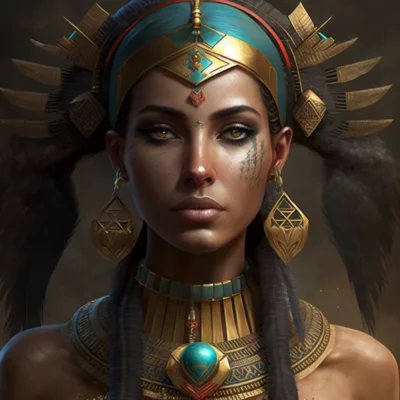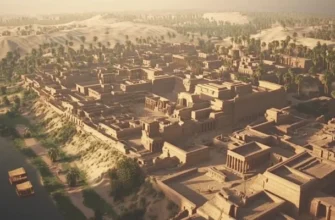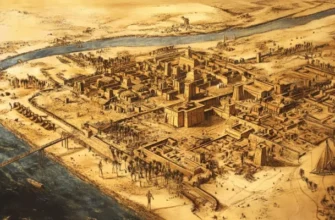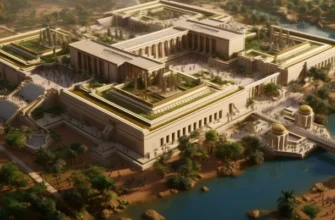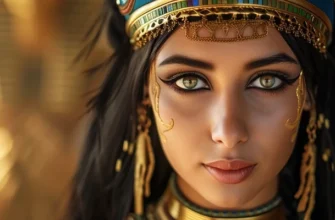Egyptian mythology was rich in various gods and goddesses, each with their own attributes and functions. One of these goddesses, Amentet, occupied an important place in ancient Egyptian culture. As the goddess of birth and rebirth, Akhentet was a symbol of new life, creation, and destruction. In this article, we will look at the history and significance of the goddess Amentet, her attributes and symbolism, cult rites and practices associated with her, and the role of Amentet in modern culture.
History and significance of the goddess Amentet
Akhentet is one of the most important goddesses in ancient Egyptian mythology. Her story begins in ancient times when she was the first wife of the god Ra. According to the myth, she gave birth to her first child, the god Shu. Amen became a symbol of motherhood and birth, as well as rebirth and rebirth.
In ancient Egyptian mythology, Amentet was often depicted as a woman with sheep’s horns and a sun disk on her head. She also had wings, symbolizing her divine nature and power over the sky. Her symbol was a tree with two branches, symbolizing the Nile and Ahoris rivers, as well as her power and authority over water.
Akhentet was one of the few goddesses in ancient Egyptian mythology who did not have a husband or partner. This made her an independent and powerful goddess who wielded great power and strength.
The cult of Akhenaten was popular in different historical eras of Egypt, especially during the New Kingdom. The goddess often coincided with other goddesses, such as Isis and Selkis, and her cult image often changed depending on the region and time.
In many myths associated with Akhenaten, she was depicted as a goddess who helps the souls of the dead cross the River Styx and enter the underworld. She was also associated with the cult of the dead and was a symbol of rebirth and rebirth.
In modern culture, Akhenaten is not often mentioned, but her image can be found in a large number of books and films related to Egyptian mythology. She remains an important symbol of female power and motherhood that has inspired people for centuries.
In general, the goddess Amentet was an important symbol of ancient Egyptian mythology, and her influence can be seen in various aspects of Egyptian culture and art. She symbolized power over life and death, as well as rebirth and rebirth, making her an important figure for understanding ancient Egyptian history and culture.
Attributes and symbolism of the goddess Akhentet
The goddess Akhentet is an important figure in ancient Egyptian mythology and culture. She is depicted as a woman with the head of a sheep, sometimes with the head of a woman’s or lion’s face. In ancient Egypt, she was often depicted wearing a tall, conical headdress, symbolizing her power over death and rebirth.
One of the main attributes of the goddess Akhentet is a water lily, which symbolizes her power over water and life. Other attributes associated with the goddess include a sacrificial table symbolizing sacrificial rituals, sometimes she holds a sacred ankh, a symbol of life, or torches representing rebirth and eternity.
The symbolism of the Amentet is also associated with rebirth and rebirth. The water lily she holds in her hands symbolizes flowering and rebirth. The ankh is a symbol of eternal life, indicating that Amentet not only possesses life but also gives it to others.
In addition, Amentet symbolized motherhood and protection. In many images, she is depicted with a child in her arms, which reminds us of her maternal qualities. Her attributes are also often associated with healing and healing power, making her an important figure for medical science in ancient Egypt.
The cult of Amentet and her role in ancient Egyptian mythology
The cult of the goddess Akhentet had a significant impact on ancient Egyptian religion and culture. She was often depicted in temples and on the walls of pyramids along with other important gods of the time, such as Ra, Osiris, Isis, and others.
The cult of Akhenaten had many religious rites and practices. In particular, it was known that the goddess had a special temple in Tefnut where she received worship and sacrifices from her worshippers. It is also known that the goddess had special festivals that were held in her honor, such as the festival of Aket.
Aket also played an important role in ancient Egyptian mythology. According to the myths, she was the daughter of the sun and the sky goddess Nut, as well as the sister of the god Khnum, who created people on the potter’s wheel. Her role in the myths was associated with the creation and rebirth of life.
According to legend, when Ra was getting older and began to lose his strength, he called his followers together to advise him on how to recover. Akhenet, knowing that Ra needed the power of the sun for his revival, gave him water from her shrine in Tefnut. This allowed Ra to regain his strength and continue his life’s journey.
In the culture of ancient Egypt, Akhenaten was a symbol of rebirth and life. It was symbolized by many images, such as the moon, the tree of life, the viper, and others.
In addition, Amentet played an important role in the song literature of ancient Egypt, in particular, in the poem “Osiris and the Witch of Tahos”. In this poem, Amentet is described as the mother of Osiris and Isis, who provided them with patronage and protection.
The cult of Amentet was also associated with death and rebirth, so the goddess was often depicted next to a sarcophagus and the process of mummification. Her rebirth took place during the harvest season, when her symbolism was the vegetative bud.
All these aspects of the cult of Akhenaten helped ancient Egyptians to maintain peace and a sense of security in life after death, as well as hope for rebirth and new life.
Conclusions: the importance of the goddess Akhentet for modern culture
The goddess Akentet is one of the most prominent figures in ancient Egyptian mythology, and her cult reflected the meaning of life and death in the ancient Egyptian world. Despite the fact that the cult of Akhenaten has not survived in the modern world, the symbolism of the goddess and her story have influenced the culture of many nations.
In the modern world, the meaning of the goddess Akhentet is often associated with feminine power, responsibility for health, and protection of the body and soul. Her symbolism can also represent rebirth, new beginnings, and change. In some modern religious traditions, the goddess Amenet can act as an archetype of feminine wisdom and strength that helps in the human trials of life.
In addition, images of the goddess Amenet can be found in contemporary art and design culture, from symbolism in various brands and logos to films and literature. All of this suggests that the history and symbolism of the goddess Amenet is an important source for contemporary culture.
Thus, the goddess Akhenaten remains an important figure for understanding ancient Egyptian mythology and its influence on modern culture. Her significance is reflected in her symbolism, which is often associated with courage, wisdom, and protection, making the goddess Amentet popular around the world.
